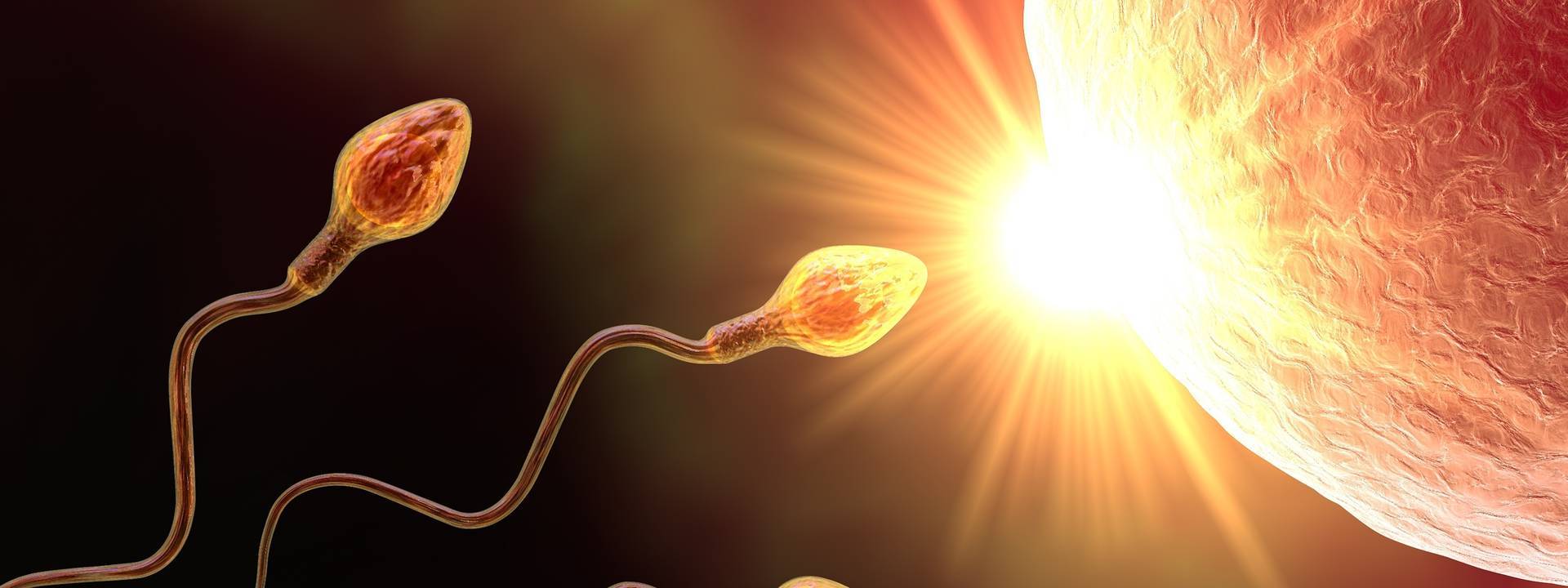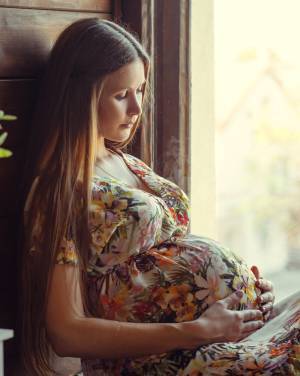The Process of Fertilization
- While conception is a natural wonder that is only possible during a limited time frame within the monthly cycle — leaving many women to wait longingly over an extended period to conceive — it can also happen quickly. Many pregnancies come as a surprise and are unintended. Therefore, even beforehand, the concern frequently arises: What if...?
- When can you get pregnant? How high is the probability of getting pregnant?
- This article provides you with answers and information about fertilization and becoming pregnant.
🤰 Am I pregnant? — Take the free Online Pregnancy Test!
🗓 Pregnancy Tracker — Find out your week of pregnancy!
Do you have any questions or concerns? Write your message directly here ⬇️
When Is Pregnancy Possible?
Fertilization, aka conception, can only occur when having sex during a woman’s fertile window. During this time frame, the probability of getting pregnant increases. Wondering what this meant by "fertile window" and how to recognize it?
Cervical Mucus and the Fertile Window
During one’s monthly cycle, distinct indicators reveal when the fertile window begins. Many women will notice an increase in discharge, aka cervical mucus. This is due to the hormone estrogen, which causes the thick mucus plug, sealing the cervix, to liquefy.
The exact timing of these changes within the cycle varies from woman to woman. This first phase of the cycle can also shift from one month to another. The female body is, after all, a very complex and amazing organism and does not function like a machine.
Should a woman have sexual intercourse during this time, the presence of cervical mucus makes it possible for the sperm to survive. Usually, sperm succumbs to the acidic environment within the vagina. The liquified mucus also enables the sperm to travel through the cervix to the fallopian tube, where it can survive up to five days.
The tricky thing is that it is impossible to pinpoint the exact moment one's fertile window begins. You may already be fertile before any cervical mucus is visible. Additionally, some women produce only small amounts.
ℹ️ Note: Even if you go to the bathroom after having sex, and most of the sperm leaks back out, you can still become pregnant. Just one of the tiny sperm cells reaching the egg is all it takes.
For more information, go to Types of Vaginal Discharge — Is Mucus a Sign of Pregnancy?
Ovulation
During each menstrual cycle, estrogen causes several egg cells to mature. These are surrounded by a protective barrier called “follicles". One of these follicles usually becomes ready to be released. Once this follicle matures, it bursts open, releasing an egg into the fallopian tube.
This process, called ovulation, occurs about 14 days before the next menstrual period. The egg, situated in the enlarged end of the fallopian tube, can now be fertilized within a maximum of 12-18 hours. This means that, in addition to the five days before ovulation, you can still become pregnant for about one day after ovulation.
How Do You Get Pregnant? — Process of Fertilization
For fertilization to occur, a sperm cell must come in contact and fuse with the egg cell. During the fusion, the genetic information of the maternal and paternal cell nuclei combine, forming new genetic information. Here, a single sperm is sufficient.
It takes approximately five days for the fertilized egg to move along the fallopian tube to the uterus to implant in the uterine lining. Once this has occurred, the pregnancy can soon be verified, even by using a standard pregnancy test.
Gradually the woman's body adjusts to the new situation and she may notice various signs of pregnancy. She will miss her next menstrual period.
👆Sometimes, more than one egg cell is released during ovulation within the same cycle. This is how multiple births can happen. If two eggs are released and fertilized, fraternal twins develop.
Identical twins form when a fertilized egg divides at an early stage. Both embryos then share the same genetic information. Usually, they implant separately in the uterus, and distinct amniotic cavities form. In rare cases, the twins share one amniotic cavity and placenta.
👧🏻👧🏻 For more information, go to Twin Pregnancy.
Can You Get Pregnant the First Time You Have Sex?
Maybe you have just had sex for the very first time. Everything happened way too fast and now you don't know whether you could have gotten pregnant. In general, it is possible for you to get pregnant on the first time. Whether fertilization has actually occurred or not depends on whether you had sex during your fertile window.
Of course, it also depends on whether you used contraception and whether it worked. Without contraception, the probability of becoming pregnant from sex during your fertile window increases. Sometimes women can even get pregnant despite using contraception.
Determining the Date of Conception
The date of conception is essential for calculating the due date. Sometimes it also plays a role in determining paternity. Still, it is impossible to nail down the exact date of conception.
- 📖 Additional information: Determining the Father
- 👩❤️👨 Test: Pregnant from an Affair — Now What?
It is easiest to calculate your current week of pregnancy and the due date when there is only one possible date of conception. By charting your monthly cycle, and thereby determining your fertile window, you can narrow down the possible date of conception.
Most women can only provide the first day of the last period as a reference point. Since every woman’s cycle is different, it is improbable that the exact date of conception would be determined. Therefore, the physician will calculate the remainder of your pregnancy by adding 40 weeks to the first day of your last menstrual period (LMP). Your healthcare provider will also estimate the baby's age by size, aka crown-rump length (CRL). This will help your doctor to roughly determine the date of conception.
In some women, however, the egg matures more slowly, pushing back ovulation toward the end of the monthly cycle. In this case, basing the calculation on the last menstrual period would be rather inaccurate.
ℹ️ There are two ways to calculate the due date, aka estimated delivery date (EDD):
1. Starting at the date of conception, take away seven days and three months and add one year.
2. Starting with the first day of your last menstrual period (LMP), add nine months and seven days.
While calculating the due date, remember that the birth is considered on time even if the baby comes eight days earlier or later.
To calculate the gestational age, start counting the weeks of pregnancy from your last menstrual period (LMP). According to this calculation, you are considered two weeks pregnant at conception. Unless otherwise specified, all pregnancy regulations follow this system, resulting in 40 weeks of pregnancy rather than the actual 38.
 1054556648 | F01 PHOTO | shutterstock.com
1054556648 | F01 PHOTO | shutterstock.com
Am I Pregnant? — Where Do I Go from Here?
Hopefully this article addressed some of your questions and provided satisfactory answers.
Perhaps you were not just looking for facts. You may have just found out you are pregnant and have many questions running through your mind. That is understandable, especially if the pregnancy was a surprise that you may or may not be excited about.
Whatever your situation, we are here for you. Our goal is to provide you with judgement-free resources for your next step:
- 🤔 Could my symptoms be early signs of pregnancy?
- 💗 Could I be pregnant from making out?
- 💊 Should I take Plan B?
- 🧑⚕️ (Suspecting a) pregnancy — How soon to see a doctor?



























